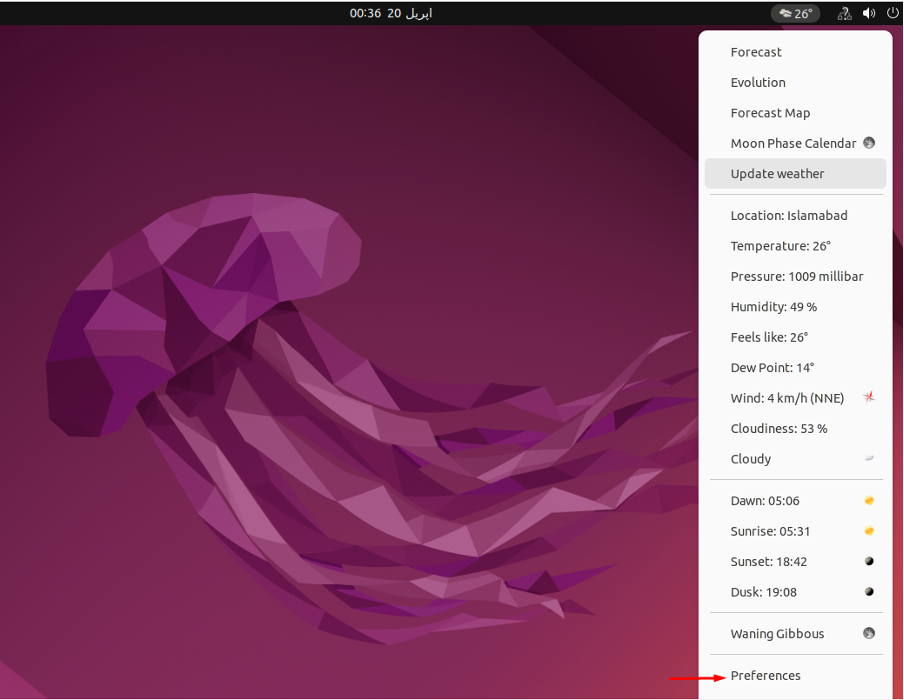

Having all stations plotted on a map guides you as to where high- and low-pressure systems, fronts, and the like are located, which ultimately helps you decide where to draw them in. But if you'll be analyzing a weather map by hand, station plot data is often the only information you start off with. If a weather map has already been analyzed, you'll find little use for the station plot data.
#Weather indicator for linux for free
There are over 1,000 available for free download on GNOME’s extension page.

(When reading the chart, note whether the time of year is daylight saving time or standard time and read accordingly.)Īs seen here, some surface weather maps include groupings of numbers and symbols known as weather station plots. GNOME extensions are small plugins created by the community to add extra features to and extend the functionality of the GNOME desktop environment. If you're in California (which is Pacific Coastal Time) and the UTC issue time is "1345Z" (or 1:45 p.m.), then you know that the map was constructed at 5:45 a.m. If you're new to Z time, using a conversion chart (like the one shown above) will help you easily convert between it and your local time. Known as Zulu or Z time, this figure is included on a weather map so that all meteorological weather observations (taken at different locations and therefore, in different time zones) can be reported at the same standardized times no matter what the local time might be. It tells you when the weather map was created and also the time when the weather data in the map is valid. One of the first coded pieces of data you might notice on a weather map is a 4-digit number followed by the letters "Z" or "UTC." Usually found at the map's top or bottom corner, this string of numbers and letters is a timestamp.


 0 kommentar(er)
0 kommentar(er)
